Force India revealed their 2013 VJM06 F1 car at Silverstone overnight. As with the other teams to show their cars already this year, aside from the modesty panel hiding the ugly stepped nose, the new car looks a lot like last year’s VJM05.
Despite the relatively familiar looks Andy Green, Technical Director, says it’s a totally new car.
“It’s a brand new car from the ground-up—everything is new,” said Green. “We discussed carrying over big chunks of last year’s car, including the chassis, but decided not to. There were still some gains to be had with the chassis, so we elected to take the performance benefits. The biggest change that everybody is going to notice this year is the fairing on top of the nose to hide the ‘step’. It’s neutral as far as the car’s performance is concerned but tidies up the flow over the top of the chassis.â€
Following the departure of Nico Hulkenberg to Sauber, Force India is yet to name its second driver. That meant Paul di Resta looked a bit lonely while posing with the VJM06 at the car’s launch. Although it did mean he got first drive of the car, completing some installation laps around Silverstone.
They may only have one driver for now, but Force India has provided heaps of pics and there’s another 20 for you after the break. There’s also the now mandatory Peter Windsor/Craig Scarborough video, which includes further discussion with Andy Green.
Sahara Force India unveils the VJM06 at Silverstone
1 February 2013
Sahara Force India unveiled its 2013 challenger today as Paul Di Resta pulled the covers off the VJM06 at Silverstone circuit.
The VJM06 is the third car to be overseen by Technical Director, Andrew Green, and builds on the strengths of the 2012 car. With stable technical rules the car is more evolution than revolution with the removal of the ‘step’ nose being the most obvious visual change.
“The VJM06 doesn’t look massively different to its predecessor, but beneath the skin we’ve looked at every detail to try and find more performance,†says Team Principal, Dr Vijay Mallya. “I’ve followed the development of the car closely and I’m proud of what we have achieved. The objective now is to make sure we build on the promise of last year and have a strong start to the season.â€
Summing up the approach to the design of the VJM06, Andrew Green said: “It’s a brand new car from the ground-up – everything is new. We discussed carrying over big chunks of last year’s car, including the chassis, but decided not to. There were still some gains to be had with the chassis, so we elected to take the performance benefits. The biggest change that everybody is going to notice this year is the fairing on top of the nose to hide the ‘step’. It’s neutral as far as the car’s performance is concerned but tidies up the flow over the top of the chassis.â€
Chief Operating Officer, Otmar Szafnauer, praised the team’s efforts over the winter to develop the VJM06: “We’re very optimistic. We’ve been working hard over the winter, trying to make improvements where we know we can find performance. Everything has come together very nicely. We’ve also focussed on operational strength by bolstering our simulator programme and increasing our CFD capacity with new hardware.â€
Paul Di Resta, half of the team’s 2013 line-up, was delighted to see his new car: “Seeing the car built and complete for the first time is a special feeling. I’ve followed its progress in the tunnel and it looks very impressive – aggressive and fast. Now I’m just eager to get out there and see where we stand compared to our competitors. After the winter I feel refreshed and keen to get back to business.â€
The Sahara Force India cars will be powered by Mercedes engines with the gearbox supplied by McLaren Applied Technologies for a fifth season. This will be the third season with the Mercedes KERS.
VJM06 Technical Specification
- Chassis: Carbon fibre composite monocoque with Zylon legality side anti-intrusion panels.
- Front suspension: Aluminium uprights with carbon fibre composite wishbones, trackrod and pushrod. Inboard chassis mounted torsion springs, dampers and anti-roll bar assembly.
- Rear suspension: Aluminium uprights with carbon fibre composite wishbones, trackrod and pullrod. Inboard gearbox mounted torsion springs, dampers and anti-roll bar assembly.
- Overall width: 1800mm
- Overall height: 950mm
- Overall length: 5100mm
- Overall weight: 642kg (with driver, by regulations)
- Wheels: BBS forged wheels to Sahara Force India specification
- Engine supplier: Mercedes AMG High Performance Powertrains V8 2.4 litre
- KERS: Mercedes AMG High Performance Powertrains
- Transmission: McLaren Racing 7-speed, semi-automatic, ‘e-shift’
- Lubricants: Mobil 1 products
- Spark plugs: NGK
- Clutch: AP Racing carbon clutch
- Tyres: Pirelli
- Brake system: AP Racing
- Brake material: Brembo
- Dampers: Penske
Q&A with Dr Vijay Mallya—Team Principal and Managing Director
Dr Mallya, the new season is upon us. How excited are you to see the VJM06 come to life?
I think everyone in the team is very excited about this car and eager to go testing and see where we stand. With stable technical rules the VJM06 doesn’t look massively different compared to its predecessor, but beneath the skin we’ve looked at every detail to try and find more performance. I’ve followed the development of the car closely and feel proud of what we have achieved so far.
You’ve given great consideration to the driver line-up for this season. Are you closer to finalising things?
Paul will race with us for a third season. He has delivered some great performances for us over the last two years and gives us the consistency we need going into 2013. He had a difficult end to last season, but we’ve worked hard to understand those issues and I believe he can step up another level this year. As for his teammate, we had a shortlist and have considered every driver who is available. We are very close to making our decision and I can assure you that we will arrive in Australia with one of the most exciting pairings on the grid.
You announced an investment programme for the team late last year. How is that progressing?
The programme is underway and we are currently looking for the land to build our new wind tunnel. The team has done a remarkable job with the resources that we already have, but if we want to realise our long-term ambitions we need to give our engineers the best tools available, starting with a state-of-the-art wind tunnel. The more immediate benefits of our investment are already in place for 2013 with greater CFD capacity.
What will be the objectives for the year ahead?
We begin 2013 hungrier than ever before. We ended last season with a very competitive car and we even led for 30 laps in Brazil. That’s given everyone a taste of what it feels like to race at the front and shows what we can achieve when everything comes together. We were unlucky to miss out on a podium last year on several occasions so that is certainly a clear ambition for the year ahead. The first objective is to hit the ground running and have a strong start to the season. That’s been our weakness for the last couple of seasons so we need to build on the momentum and carry on where we left off in 2012.
Q&A with Otmar Szafnauer—Chief Operating Officer
Otmar, how did the team approach the winter and its preparations for this season?
The technical regulations haven’t changed much and the sporting regulations just slightly, so we haven’t had a huge upheaval. It’s just a continuation of last year’s development really. However, operationally we’ve made some improvements over the winter.
Can you elaborate on that?
We’ve strengthened race engineering and our strategy group, and our simulator programme has been bolstered. We have a dedicated simulator engineering team now, which we didn’t have last year, and increasing simulator time will bring a benefit to our race programme. We’ve significantly increased our CFD capability with new hardware, along with an increase in human resources. Operationally those were the big changes. Our focus over the winter has also been on improving our pit stop times and consistency. We need faster pit stops, and faster more often.
How would you define the team’s targets for the season?
I think the general aim is to continue with the car performance we showed towards the end of last year and successfully introduce the operational improvements. From a global perspective, that is what we are looking to do. For what place we will be fighting, I can’t tell you yet. From a car standpoint and operationally, yes, we’re looking to improve. Where we left off at the end of last year was a very good place – at times we were often the fourth quickest car on the circuit. So there are lots of reasons to be optimistic we can build on that.
Dr Mallya spoke last year of increased capital investment. Is the new CFD infrastructure part of that?
Yes that’s part of it and the wind tunnel is the other part. We’ve embarked on a programme to build a new tunnel, but that will not help this year or 2014. In fact it could detract from it – if we are busy fitting a new tunnel, we have to be very careful that we don’t take our eye off the ball.
You mentioned 2014 – at what stage will the team switch its development focus from the VJM06 to the first turbo car?
It’s a difficult one. You’ve got to understand where you are in the championship and whether you can gain or lose a place, and if you can’t, then you can switch your resources earlier. If you can gain, then you have to decide what proportion of those resources you switch so you don’t shoot yourself in the foot in the current season in order to get a bit of an advantage for next year.
2012 was a very competitive season up and down the field. Do you expect to see more of the same?
Because the rules haven’t changed that much I think it will be a continuation of 2012. It went down to the last race and I think 2013 will be equally as exciting, whether it’s in the midfield, or up front. It will be interesting to see if any teams can do a better job than they did last year and move forward – which of course is what we are looking to do. We’re very optimistic. We’ve been working hard over the winter, trying to make improvements where we know we can find performance and we look forward to starting winter testing.
Q&A with Andrew Green—Technical Director
Andrew, can you elaborate on the key factors behind the development of the VJM06?
Obviously the regulations are reasonably stable from last year to this year and the ban on the double DRS didn’t affect us, so the transition has been more straightforward than in previous years. Last year we basically stopped bringing developments to the track just after the middle of the season so the trackside guys had a chance to understand what they had, rather than it changing every race, which is what had been happening up to that point. When you have a platform that is stable you can refine it and really dial it in. We focused on trying to understand what the car was doing, where it differed from our models and, importantly, how we worked the tyres. We used that extra knowledge for this year’s car and it helped quite a lot.
Looking at the strong performance in the last few races, did that philosophy work?
We think it did. We literally didn’t touch the car for the last third of the season and we were finding performance in what we had rather than just assuming that the next aero upgrade would add performance.
How different is the VJM06 compared to its predecessor?
It’s a brand new car from the ground-up – everything is new. We discussed carrying over big chunks of last year’s car, including the chassis, but decided not to. There were still some gains to be had with the chassis, so we elected to take the performance benefits. However, the car is evolution rather than revolution compared with last year, simply because of the nature of the regulations.
Visually what are the major changes?
The biggest thing that everybody’s going to notice this year is the fairing on top of the nose to hide the ‘step’. It’s neutral as far as the car’s performance is concerned but tidies up the flow over the top of the chassis, so it’s a small thing really.
What about under the skin?
There are quite a few large changes under the skin. Because we focussed a lot on the tyres last year, we’ve given ourselves a few more options on set-up to help manage them from qualifying to the race. So that’s something we will focus on going into winter testing – we’ll be looking at those options and trying to understand them. It’s going to be a challenge assessing these during the cold winter tests, but those options will give the engineers more weapons in their armoury. The suspension has been tuned for what we learned on the tyres, so the configuration is different to last year with changes aimed at better complementing the tyres. The rear suspension is quite different – for aerodynamic reasons the whole thing has been lifted up to allow the airflow under the lower rear wishbones.
Pirelli has modified its tyres for 2013. What impact has that had?
We ran them briefly in Brazil – although it was just the new construction – and now we’ve got all the new compounds to run in winter testing. We gathered some data and made some changes to the car. They are softer, so you have to run the car higher to get the same end-of-straight ride height. The temperature range of the compounds has been moved so that’s a big part of the learning we have to do in testing, to make sure we understand where the sweet spots are for each compound – and as we get to each track we have to make sure the tyres remain in this sweet spot, which is one of the basic areas we tried to understand at the end of last year.
DRS can now only be used in the nominated zones during qualifying. Does that have an impact?
It was a late change by the FIA, but we’ve caught up with it. It does slightly change your philosophy on setting the car up and ultimately your aerodynamic philosophy. The drag level, the switch level on the wing, changes slightly by doing that. The qualifying and race set-ups start to converge, as you would expect – but there’s still a set-up compromise to be dealt with. Probably on average four or five tenths of lap time will be lost in qualifying as a direct result.
Q&A with Paul Di Resta—Race driver
The 2012 season was a long one for everybody – did you have a chance to chill out over the winter?
It was a well-timed break, after the first year with 20 races in the calendar. Given the intensity of it at the end of the year, with three double-headers, everybody needed that break to recharge their batteries and get their focus on 2013. That one month off gives you a chance to understand things more and I’m quite happy to now look ahead to the new season. We’re always keen and eager to get back into the cars. I think the winter is more important for the race team who travel – the pressure that revolves around them is much higher than it is for us. They go through the mental stress of getting the car prepared over the race weekends and they are away from their families.
How have you approached your preparations this year and are you raring to go?
Last year I had some good productive training with Gerry Convy and I think this year I can actually read my energy levels and really look at when is the right time to be training, when you feel ready, and when you feel strongest. I’ll be able to manage that a bit more this year and I think my baseline is a lot higher. I’m keen and eager to get back in the car and get back to business. Looking ahead everyone is in good form in the factory. The relationships are very strong, the structures in some departments have changed, and I think all the boys are ready for it. Looking at the design aspects of the car, the rules haven’t changed, so effectively it’s an evolution of what we had before
How important is it for the team to have a stronger start to the season this year?
That has to happen and there’s no reason why we shouldn’t. I think the pressure is on all the departments to make sure we start better, last year we underperformed, certainly until the European season kicked in. We did get some good results before that – in the rain in Malaysia and in Bahrain, where we just got everything together and managed to achieve something remarkable that early in the season. We need to launch a car, understand it, and bring a race package to it – whether that’s at the Barcelona test or in Melbourne – that needs to make the car quicker than when it rolled out on the first day.
This year DRS use in qualifying is restricted to the official zones. How will that change things?
In my mind I see it as a safer approach and it’s what most of the drivers want. I think ultimately the bigger teams with more downforce had the advantage, because they were coming out with double DRS systems and so on. Also, it was touch and go where you could use DRS. Some teams could use it through the corners, whereas we were closing it. I think the new regulation maybe brings it back to the teams that haven’t got quite as many resources as the top teams. Ultimately it’s fine as long as the FIA make sure the DRS is quicker over the lap and it gives you the switch and the gear ratio choice for overtaking – that is why it was introduced. It’s not there to be a performance-enhancing device in qualifying.
Everyone sampled prototype 2013 tyres in Brazil. Any thoughts on the changes?
We’ve tried the construction change, but it wasn’t the 2013 compound, which I think is going to be different. It will be interesting to see how it will affect the car. The day we tried them in Brazil we experienced the hottest track temperature all year – it was baking hot! They performed well. Pirelli has done a very good job over the last couple of years and the tyres do what they should do – they wear out and when you put a fresh set on you go quicker! Last year we probably saw a few issues where there were not enough pit stops. We want to see races with more pit stops and more strategy coming into it.
How optimistic are you heading into this season?
I’m feeling very good, I must say. I’m working very closely with my team of people, and that’s changed slightly in different departments. We’re all trying to do the best job possible. Whether it’s managing time and making sure you’re in the best frame of mind or whether that’s on-track performance and the finer details of the car set-up, ultimately it’s all about performance and results. I know the way this team works and they know how I work. When it all gels well we can obviously see the results we get. We just need to make sure we can achieve that on a more consistent basis.
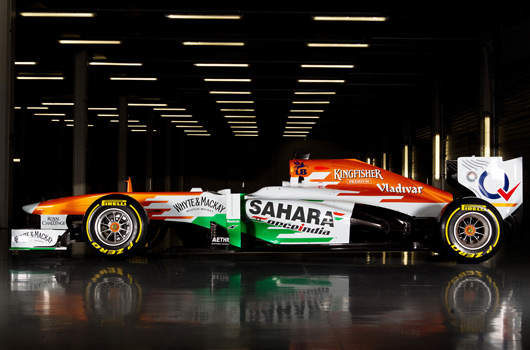
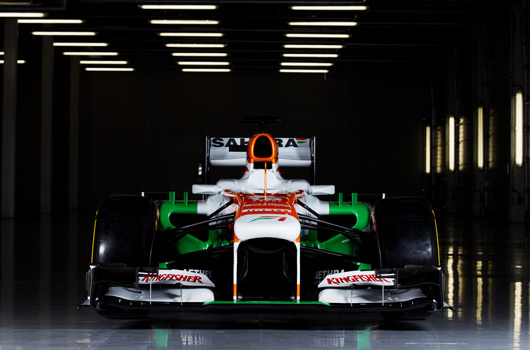
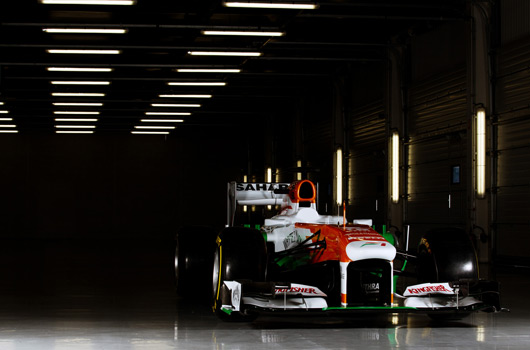
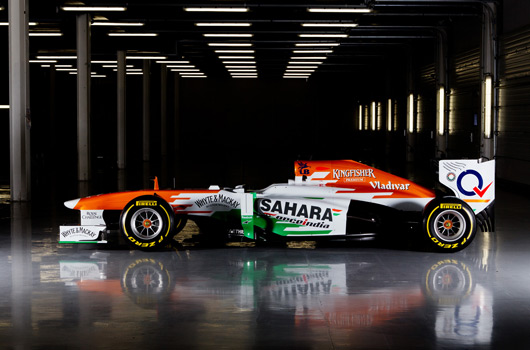
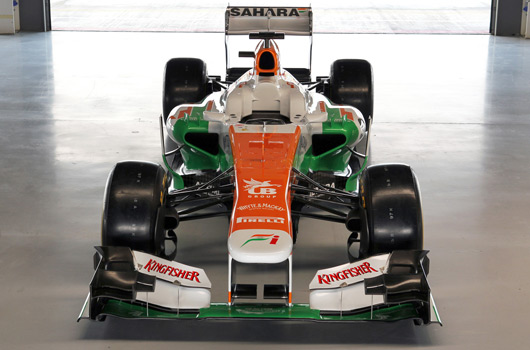
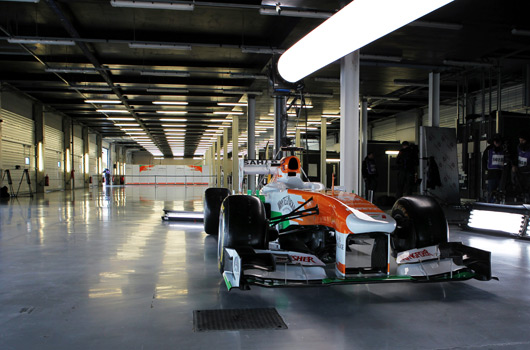
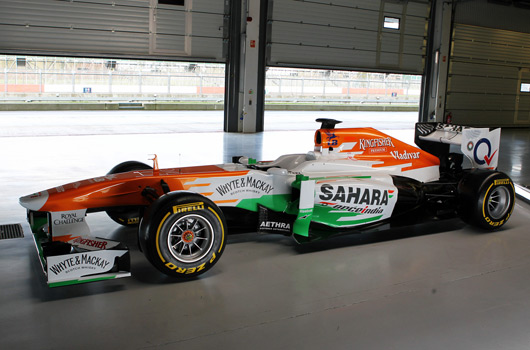
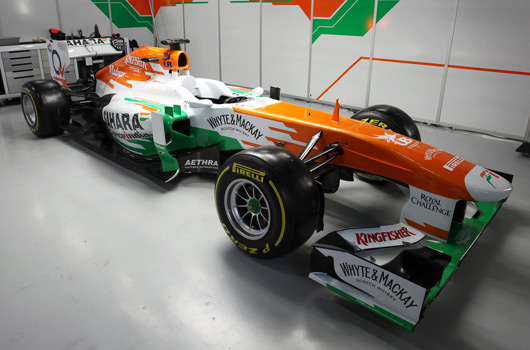
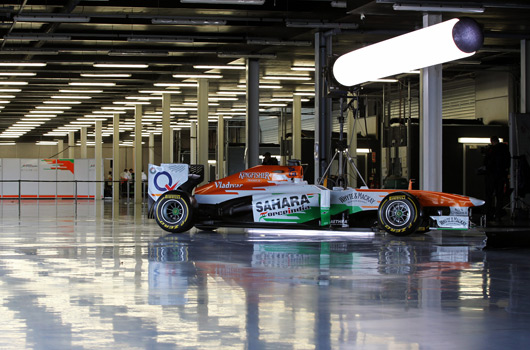
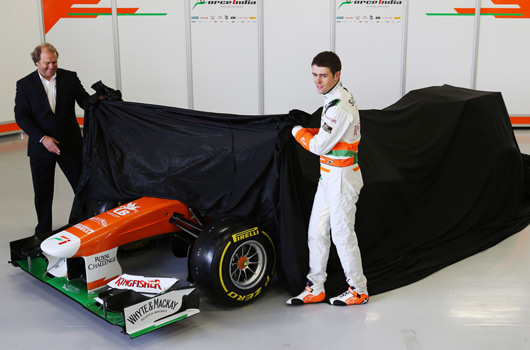
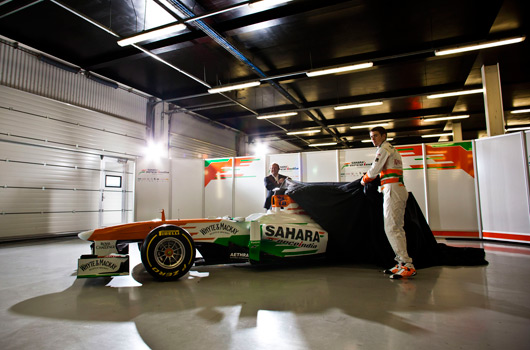
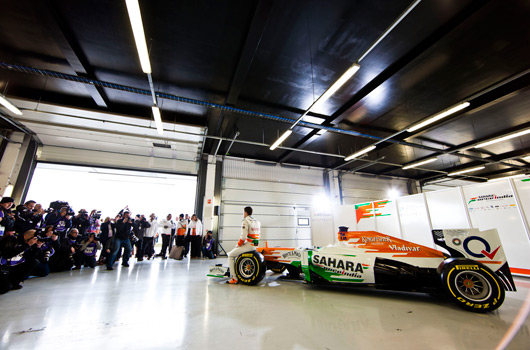
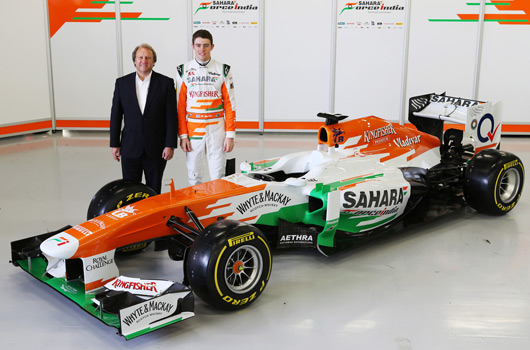
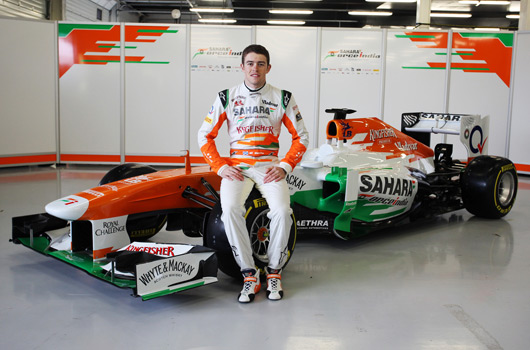
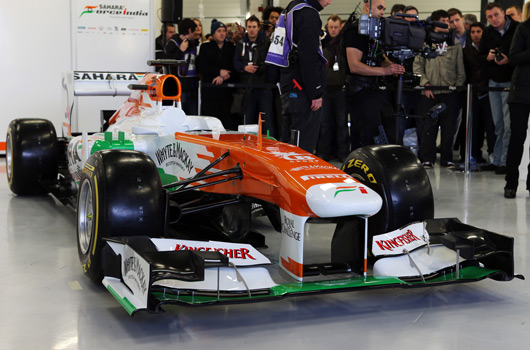
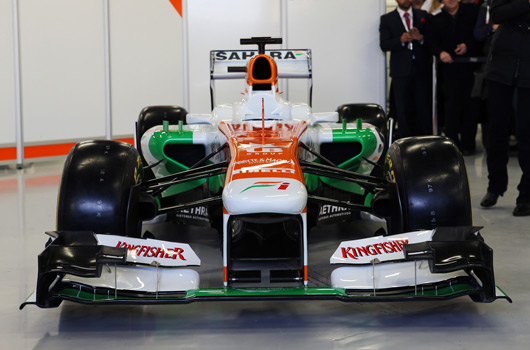
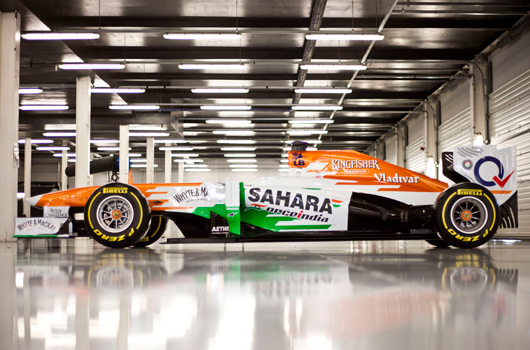
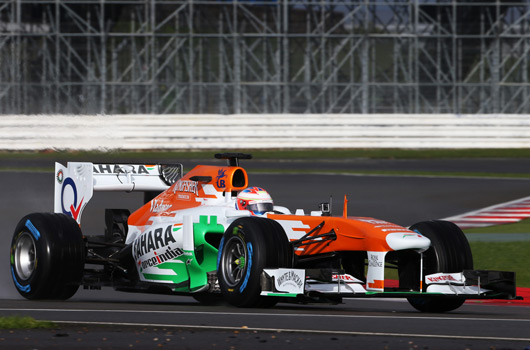
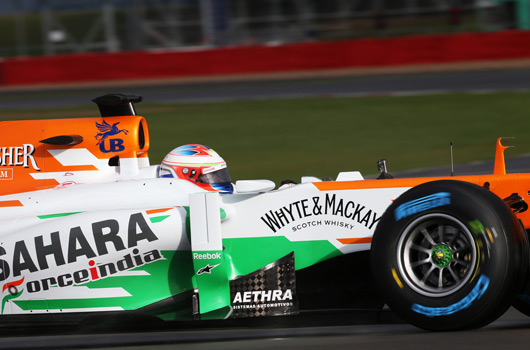
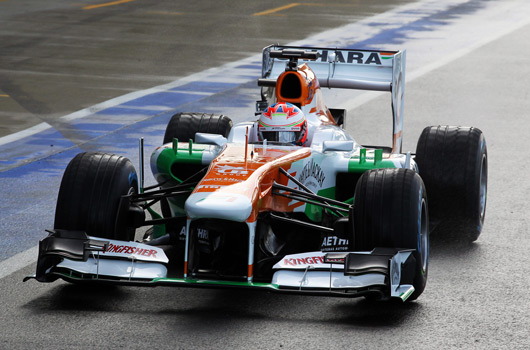
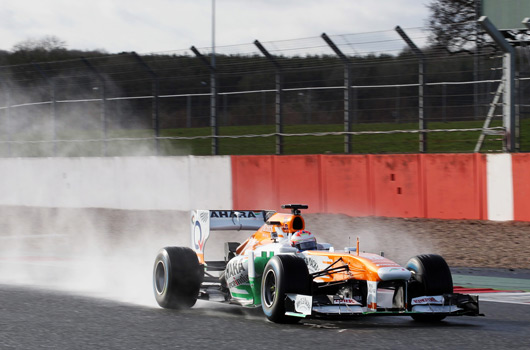
4 replies on “Force India unveils 2013 F1 car”
[…] – Monday 28 January McLaren – Thursday 31 January Ferrari – Friday 1 February Force India – Friday 1 February Sauber – Saturday 2 February Red Bull Racing – Sunday 3 February Mercedes […]
[…] time in the Lotus E21 of 1:18.148 just edged out Bianchi in the VJM06, who hopes to land the vacant seat at Force India, by a mere +0.027. The 2007 world […]
[…] Chassis: VJM06 […]
[…] probably also noticed the change in livery for Force India with what was a predominantly white car in 2013 now having a black base. There’s a bunch of new sponsors too and you can read about them in […]